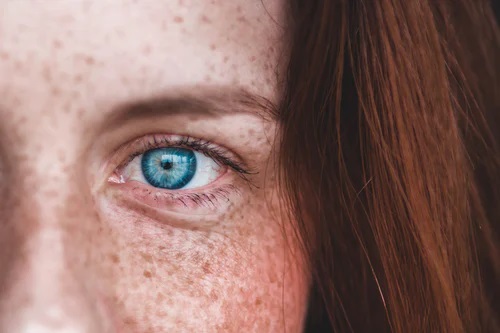What are Dark Spots on the Skin?
The appearance of dark spots on the skin, also known as hyperpigmentation, is a very common medical condition. These dark spots, which are generally harmful, may not create an aesthetically pleasing image. For this reason, various medical or home treatment methods have been developed that are applied in many different ways to get rid of dark spots. As the Enpreseig team, in this article, we have compiled ways to get rid of dark spots on the skin due to certain reasons.

Causes of Dark Spots
There are many reasons for the formation of dark spots, and knowing about the types of dark spots gives you an advantage in how to deal with dark spots. There are three different types of dark spots medically:
- Lentigo: Lentigo spots are caused by exposure to UV rays from the sun. In general, these spots are seen in approximately 90% of individuals over the age of 60, but young men or young women may also have these spots due to UV rays. Lentigo spots are generally not in a certain order and are scattered on the skin.
- Melasma: Melasma spots appear due to hormonal changes. These spots, which are generally seen in women, appear during periods when hormones change, such as pregnancy or menopause.
- Post-Inflammatory Hyperpigmentation: Post-Inflammatory Hyperpigmentation spots generally appear due to traumas on the skin after psoriasis, burns, acne, or skincare treatments that are heavy on the skin.

You have to find out what is causing the dark spots on your skin. If you know what you are struggling with, you can choose a treatment method accordingly and start making some changes in your lifestyle to prevent more dark spots. Other reasons for hyperpigmentation can be as listed:
- Solarium or Sunbathe: If you tend to be exposed to the sun at a high rate and you do not use sunscreen much, freckles may appear on your body. Topical treatments and avoiding sun exposure are the best ways to get rid of these dark spots.
- Medication, Pregnancy, Hormone Therapy: In any medication process, pregnancy or hormonal therapy for anything may affect as Melanoma. Although the treatment of dark spots caused by this ailment is difficult, there are treatment methods that can make a difference.
Serious Acne Problems: Serious acne problems also cause postinflammatory hyperpigmentation that responds to topical treatment and disappears over time.
Proven Treatment Methods to Get Rid of Dark Spots

There are several proven treatment methods to get rid of dark spots on the skin. These methods are listed as follows:
1. Remove Dead Skin:
If the dark spots on your skin were formed only a month or two ago, these spots may still be in the upper layer of your skin. It is possible to get rid of these spots easily by purifying your face from dead skin. It is to purify your face from dead skin, peel off the top layer of skin, and allow new skin to come out on top.
2. Topical Acid Treatment:
Topical acid, which is a drug treatment, is available both prescription and over the counter. Topical acids containing alpha-hydroxy acids, beta hydroxy acids, or retinoids peel off the top layer of your skin, allowing new cells to develop and thus rejuvenate your skin.
3. Chemical Peeling:
If the superficial treatments you apply do not fully heal your dark spots, you can try chemical peeling. Chemical peeling completely peels off the top layer of the skin. Chemical peels generally consist of acids and are divided into three groups according to the effect: light, medium, or deep.
4. Microdermabrasion:
Microdermabrasion is a sanding method that uses very fine crystals to remove your dark spots. A new and fresh skin tissue develops in place of your peeling skin. Microdermabrasion application can generally continue for several months.
5. Laser Treatment to Get Rid of Dark Spots:
In laser treatment to get rid of dark spots, intense pulsed lights are used to destroy the melanin that causes dark spots on your skin. Pigmented areas on your skin absorb light, break down and evaporate. It helps to remove dark spots on your body by providing crusting in these areas.
